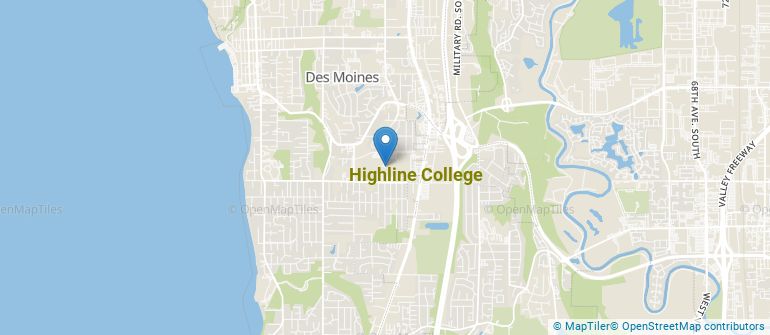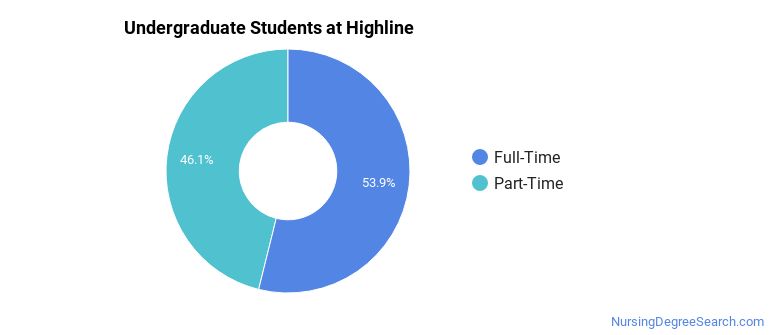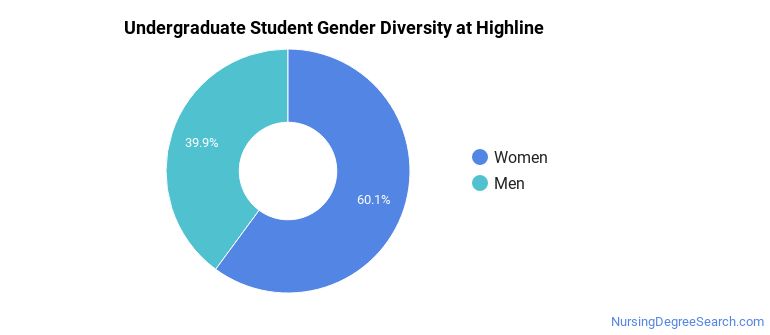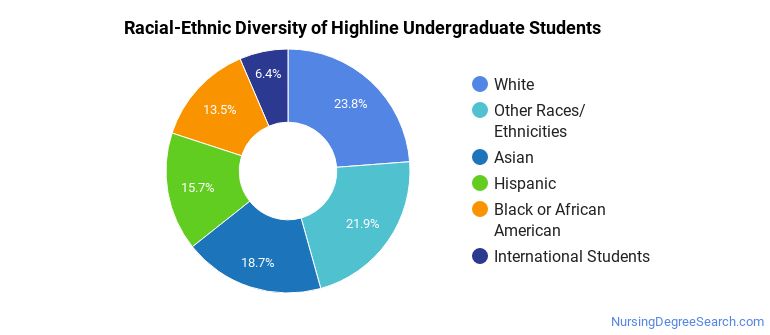Highline College Nursing Programs
Highline College is a public institution situated in Des Moines, Washington. Highline is located in a safe and convenient suburb.
Where Is Highline College?

Contact details for Highline are given below.
| Contact Details | |
|---|---|
| Address: | 2400 S 240Th St, Des Moines, WA 98198-9800 |
| Phone: | 206-878-3710 |
| Website: | www.highline.edu |
How Do I Get Into Highline?
You can apply to Highline online at: https://www.public.ctc.edu/ApplicantWebClient/Applicant/ApplWelcome.aspx
Can I Afford Highline College?
Student Loan Debt
It's not uncommon for college students to take out loans to pay for school. In fact, almost 66% of students nationwide depend at least partially on loans. At Highline, approximately 1% of students took out student loans averaging $3,599 a year. That adds up to $14,396 over four years for those students.
Highline College Undergraduate Student Diversity

Gender Diversity
Of the 3,140 full-time undergraduates at Highline, 40% are male and 60% are female.

Racial-Ethnic Diversity
The racial-ethnic breakdown of Highline College students is as follows.

| Race/Ethnicity | Number of Grads |
|---|---|
| Asian | 586 |
| Black or African American | 425 |
| Hispanic or Latino | 493 |
| White | 747 |
| International Students | 202 |
| Other Races/Ethnicities | 687 |
Geographic Diversity
Washington students aren't the only ones who study at Highline College. At this time, 10 states are represented by the student population at the school.
Over 49 countries are represented at Highline. The most popular countries sending students to the school are Japan, China, and Vietnam.
Highline College Nursing Concentrations
The table below shows the number of awards for each concentration.
| Major | Associate’s | TOTAL |
|---|---|---|
| Registered Nursing | 71 | 71 |
| Nursing Assistant/Aide and Patient Care Assistant/Aide | 0 | 0 |
| TOTAL | 71 | 71 |
References
*The racial-ethnic minorities count is calculated by taking the total number of students and subtracting white students, international students, and students whose race/ethnicity was unknown. This number is then divided by the total number of students at the school to obtain the racial-ethnic minorities percentage.
More about our data sources and methodologies.
